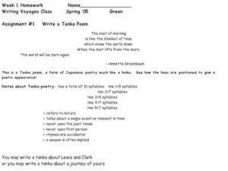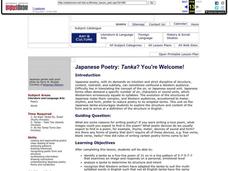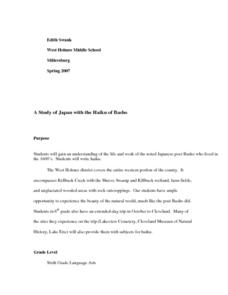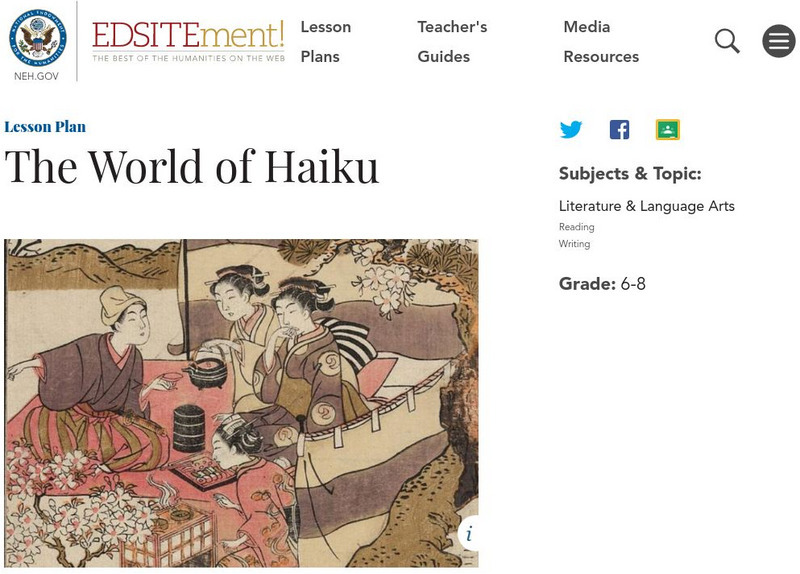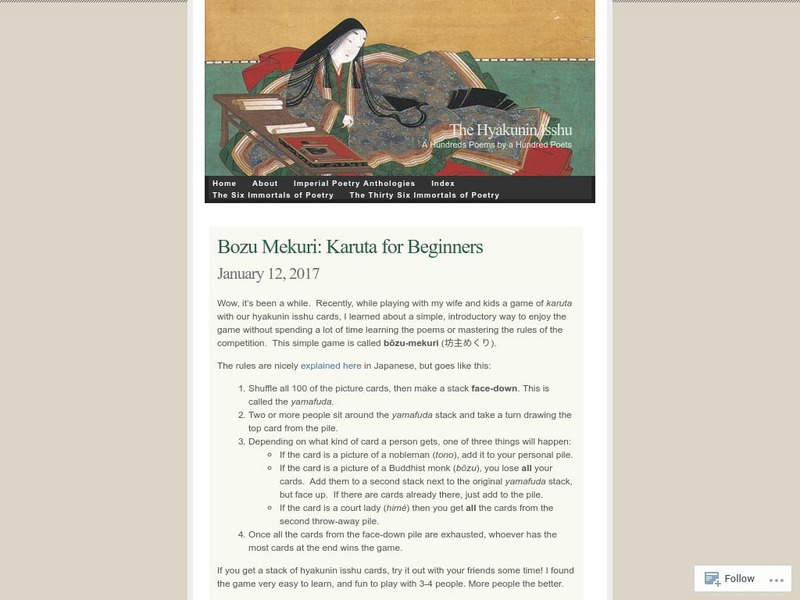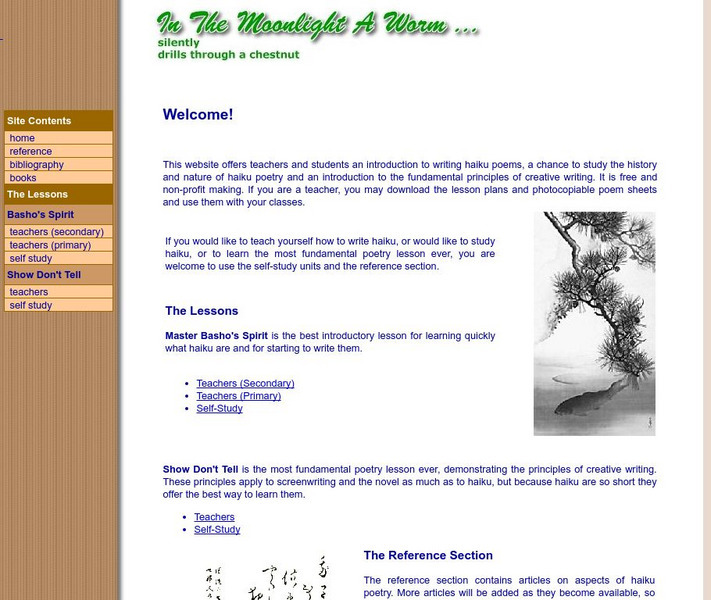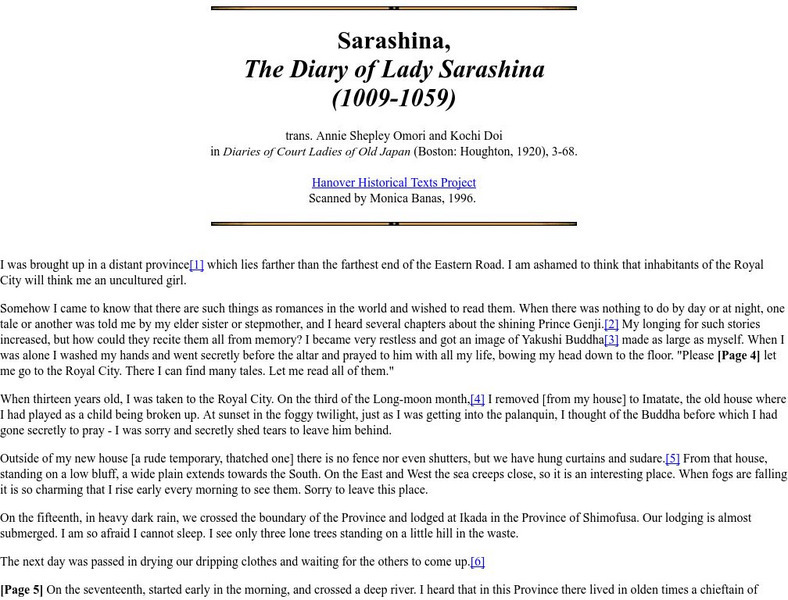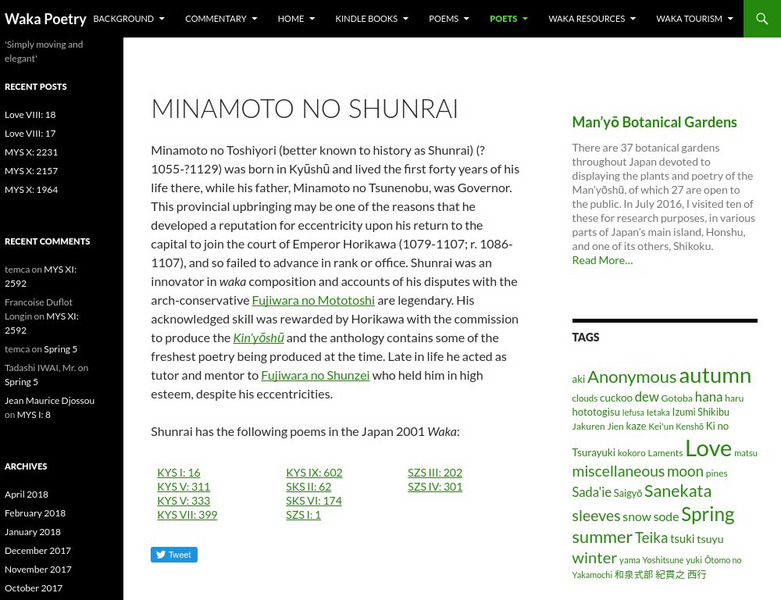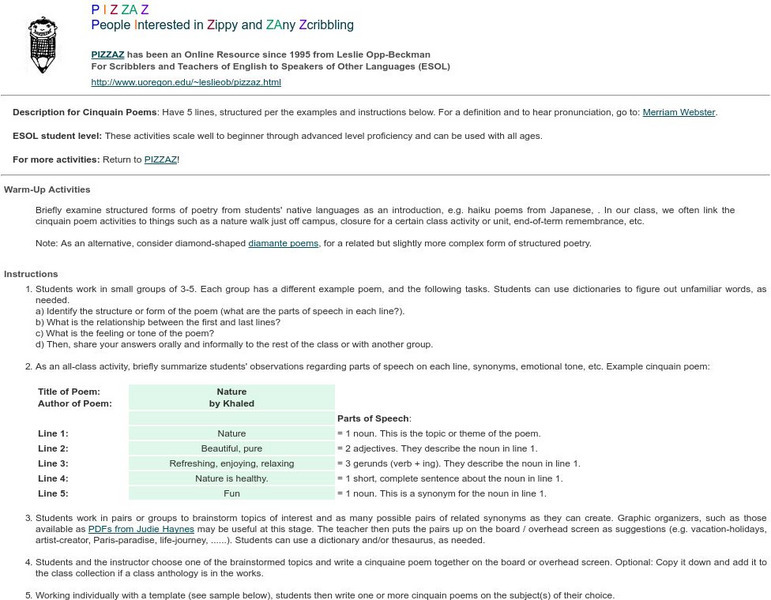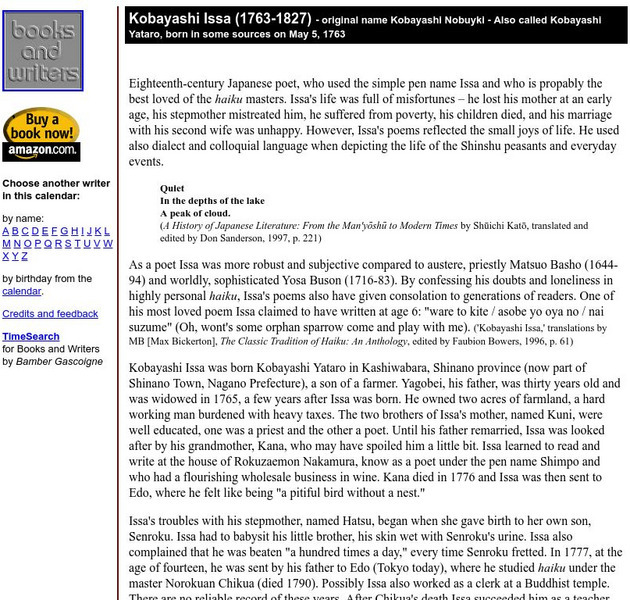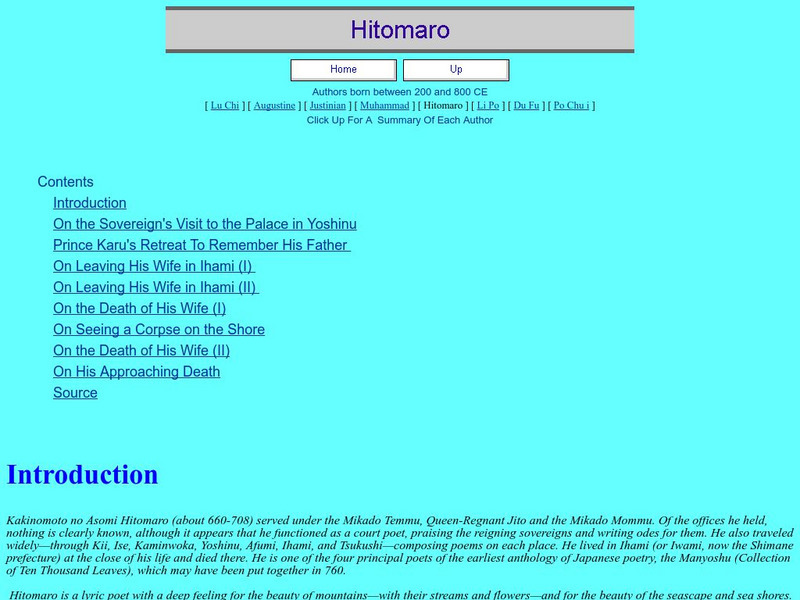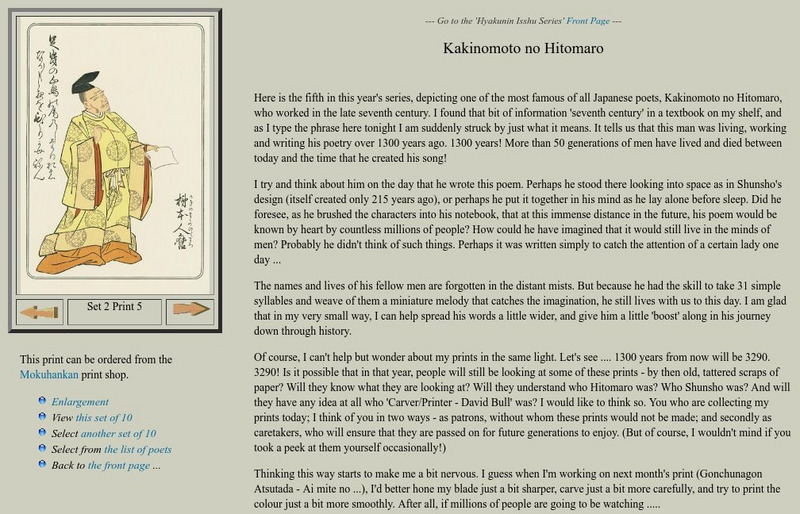PBS
Exploring Selected Haiku by Issa
If your class doesn't know what a haiku is, show them two examples from the Japanese poet Issa (both included here), and have them make some observations. How long are they? What is the structure? A video and a list of questions help...
Curated OER
Say Hi to Haibun Fun
Students examine the Japanese writing form of Haibun. They identify the elements of Japanese prose and poetry, analyze a haibun for writing devices, complete a graphic organizer, and compose an original haibun as a form of journal keeping.
Curated OER
Japanese Poetry: Tanka? You're Welcome!
Students explore tanka, a form of Japanese poetry. They read and analyze tankas to determine the structure and intent, and compose a traditional and a non-traditional tanka.
Curated OER
Write a Tanka Poem
For this Tanka poem worksheet, 6th graders analyze a Tanka poem for number of syllables and content parameters, then write one about a journey, real or imagined using the 6 step writing process.
Curated OER
Japanese Poetry: Tanka? You're Welcome!
Students explore the structure and content of the Tanka form and to arrive at a definition of the structure in English. They analyze a tanka to determine its structure and intent and compose two Tanka; one in traditional form and one...
Curated OER
You Too Can Haiku
Students explore the country of Japan. In this international studies lesson, students utilize their geography skills to locate Japan on a map. Students explore some Japanese customs and communities. Students use descriptive language...
Curated OER
Japanese Poetry: Tanka? You're Welcome!
Students analyze Japanese tanka poetry. In this Japanese poetry lesson, students identify analyze the structure of tanka poetry. Students complete the activities at the given links for the lesson and compose two tanka poems.
Curated OER
Exploring Selected Haiku by Issa
Students explore poetry by Issa. In this haiku instructional activity, students discuss and list the attributes of Japanese haiku as the read poetry by Issa. Students write their own haiku following the criteria presented.
Curated OER
A Study of Japan with the Haiku of Basho
Sixth graders explore haiku poetry and the works of the Japanese poet Basho. They review characteristics of haiku poetry and other forms of poetry. After they write three or more haiku poems, they illustrate one of them and share with...
John F. Kennedy Center
The Kennedy Center: Lesson: You Too Can Haiku
Here's a creative lesson for students to examine various haikus, and Japanese culture, then write their own haiku poem, and illustrate it using watercolors! Provides plenty of links to more information, a thorough explanation of the...
National Endowment for the Humanities
Neh: Edsit Ement: The World of Haiku
A productive, technologically relevant site that provides a lesson plan on the Japanese Haiku. Complete with educational objectives and extensive student-centered lesson development.
National Endowment for the Humanities
Neh: Edsit Ement: Japanese Poetry Tanka? You're Welcome
A poem "which expresses a personal response to nature," the tanka is a form of Japanese writing very similar to the haiku. This lesson plan is a great extension to any study or exploration of Japanese art, culture, and writing. Included...
Other
Univ. Of Virginia: Ogura Hyakunin Isshu: 100 Poems by 100 Poets
By clicking through this site, the viewer may see these 100 poems in English, in Japanese characters or in Japanese (using the English alphabet). Some explanation of the poems' sources is also given.
Other
In the Moonlight a Worm Haiku Homepage
Learn the form, inspiration and spirit of haiku poetry and learn to write it yourself. An in-depth discussion of the philosophy behind haiku, as well as the literary structure.
Hanover College
The Diary of Lady Sarashina
The complete diary of one of the "Court Ladies" at the Japanese Imperial Court during the early 11th century. Provides many examples of Japanese poetry from the period.
Other
2001 Waka for Japan 2001: Minamoto No Shunrai
Brief biography of Minamoto no Shunrai, also known as Minamot no Toshiyori, an eleventh century Japanese poet. Also available are ten of his poems, in the original Japenes, in Japanese transcribed into the Roman alphabet, and translated...
Columbia University
Asia for Educators: What Is a Waka?
This large, wonderful site includes so much information on Asia that it is hard to showcase each element. It is easiest to enter Waka into the keyword box in order to access all the provided information. You will find an essay that...
John F. Kennedy Center
The Kennedy Center: Oceans: A Sensory Haiku
In this lesson plan, young scholars use the ocean and their five senses as inspirations to create their own unique haikus. Lesson provides assessment criteria and a list of sources.
University of Oregon
Pizzaz, Creative Writing & Storytelling: Cinquain Poems
This PIZZAZ (People Interested in Zippy and ZAny Zcribbling) lesson plan will engage students in writing cinquain poems. Examples of cinquain poems are provided. A template is also included as a graphic organizing support for students.
University of Oregon
University of Oregon: Diamante Poems
Do you know how to write a diamante poem? Check out this site to learn how to accomplish this task. This site features a lesson plan for writing poetry.
Authors Calendar
Author's Calendar: Kirjasto: Kobayashi Issa
This site provides both biographical information and some analysis of Issa's work. Links to significant names.
American Forum for Global Education
American Forum for Global Education: Haiku as a Cultural Icon
These detailed lesson plans let students research about Shiki and Haiku, compose on their own poetry, and learn about Japanese culture.
Other
Humanistic Texts: Selected Poetry of Hitomaro
The text to poetry written by Kakinomoto Hitomaro is found here.
Other
Great Japanese Poets: Kakinomoto Hitomaro
This site talks about Kakinomoto Hitomaro and has links to many other great Japanese poets.





